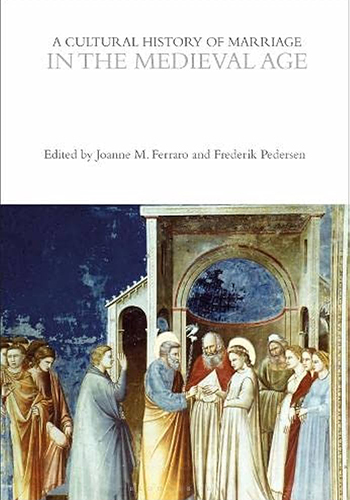 A Cultural History of Marriage in the Medieval Age
A Cultural History of Marriage in the Medieval Age The Cultural Histories Series
Volume Editors: Joanne M. Ferraro and Frederik Pedersen
Bloomsbury Publishing, 2021
Marriage in Europe became a central pillar of society during the medieval period. Theologians, lawyers, and secular and church leaders agreed on a unique outline of the institution and its legal framework, the essential features of which remained in force until the 1980s. The medieval Western European definition of marriage was unique: before the legal consequences of marriage came into being, the parties had to promise to engage in sexual union only with one partner and to remain in the marriage until one of the parties died. This requirement had profound implications for inheritance rules and for the organization of the family economy; it was explained and justified in a multitude of theological discussions and legal decisions across all faiths on the European continent. Normative texts, built on the foundations of the scriptures of several religious traditions, provided an impressive intellectual framework around marriage. In addition, developments in iconography, including sculpture and painting, projected the dominant model of marriage, while social, demographic and cultural changes encouraged its adoption.
This volume traces the medieval discussion of marriage in practice, law, theology and iconography. It provides an examination of the wider political and economic context of marriage and offers an overview of the ebb and flow of society's ideas about how expressions of human sexuality fit within the confines of a clearly defined social structure and ideology.
Copyright © 2023 - All Rights Reservedrur | Document Reader